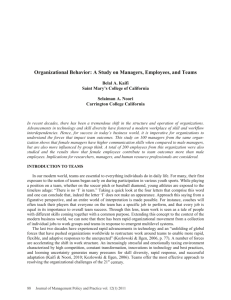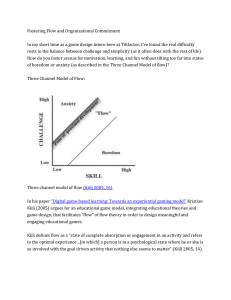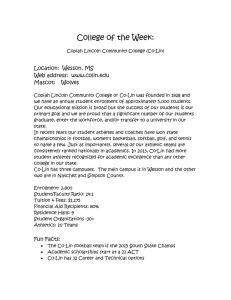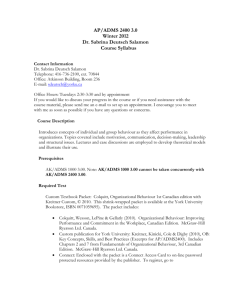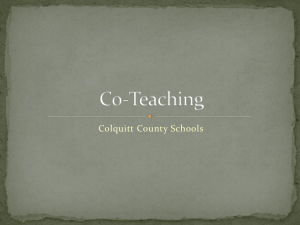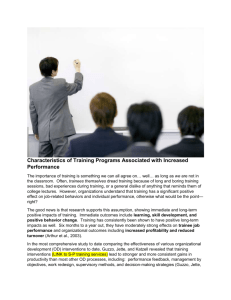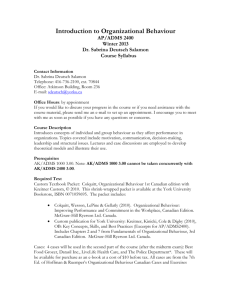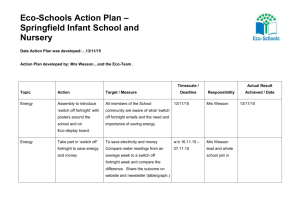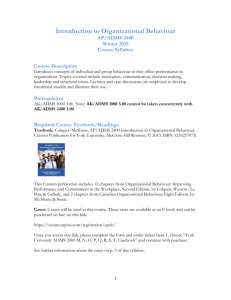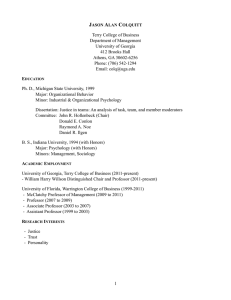1 Course Unit Title: MAN 502 Organizational Behavior Department
advertisement
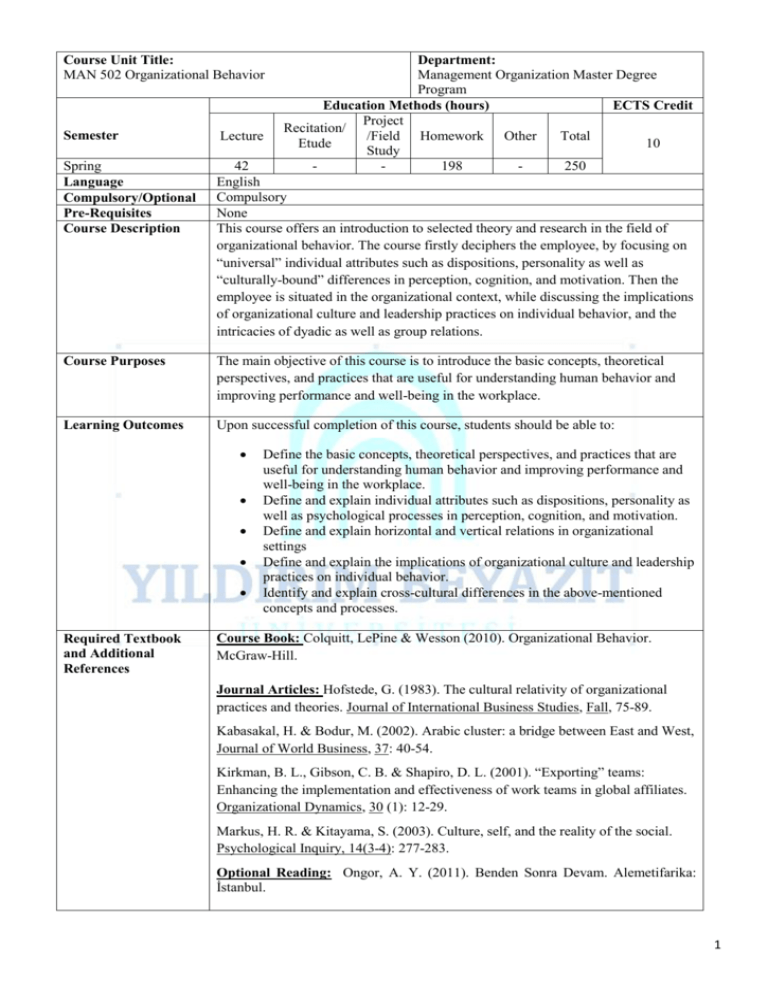
Course Unit Title: MAN 502 Organizational Behavior Department: Management Organization Master Degree Program Education Methods (hours) ECTS Credit Project Recitation/ /Field Homework Other Total Etude 10 Study 198 250 Semester Lecture Spring Language Compulsory/Optional Pre-Requisites Course Description 42 English Compulsory None This course offers an introduction to selected theory and research in the field of organizational behavior. The course firstly deciphers the employee, by focusing on “universal” individual attributes such as dispositions, personality as well as “culturally-bound” differences in perception, cognition, and motivation. Then the employee is situated in the organizational context, while discussing the implications of organizational culture and leadership practices on individual behavior, and the intricacies of dyadic as well as group relations. Course Purposes The main objective of this course is to introduce the basic concepts, theoretical perspectives, and practices that are useful for understanding human behavior and improving performance and well-being in the workplace. Learning Outcomes Upon successful completion of this course, students should be able to: Required Textbook and Additional References Define the basic concepts, theoretical perspectives, and practices that are useful for understanding human behavior and improving performance and well-being in the workplace. Define and explain individual attributes such as dispositions, personality as well as psychological processes in perception, cognition, and motivation. Define and explain horizontal and vertical relations in organizational settings Define and explain the implications of organizational culture and leadership practices on individual behavior. Identify and explain cross-cultural differences in the above-mentioned concepts and processes. Course Book: Colquitt, LePine & Wesson (2010). Organizational Behavior. McGraw-Hill. Journal Articles: Hofstede, G. (1983). The cultural relativity of organizational practices and theories. Journal of International Business Studies, Fall, 75-89. Kabasakal, H. & Bodur, M. (2002). Arabic cluster: a bridge between East and West, Journal of World Business, 37: 40-54. Kirkman, B. L., Gibson, C. B. & Shapiro, D. L. (2001). “Exporting” teams: Enhancing the implementation and effectiveness of work teams in global affiliates. Organizational Dynamics, 30 (1): 12-29. Markus, H. R. & Kitayama, S. (2003). Culture, self, and the reality of the social. Psychological Inquiry, 14(3-4): 277-283. Optional Reading: Ongor, A. Y. (2011). Benden Sonra Devam. Alemetifarika: İstanbul. 1 Assessment Methods Frequenc y 10 Contribution to Overall Grade (%) 30 Class Participation (in-class exercises, pop quizzes) Assignment and presentation* 1 10 Midterm Exam 1 25 Final Exam 1 35 *Details will be provided in the first week of class. Assist. Prof. Dr. Selin Erdil Lecturer Class attendance is necessary to succeed in this course. Students who miss more than Attendance two classes will fail. Course Outline As the instructor I reserve the right to modify this syllabus at any time. Such changes will be announced during class meetings. You are responsible for ensuring that your syllabus is current. Course Content Week 1 Topic Introduction to Organizational Behavior and organization of the class Readings Chapters 1 Chapters 2 & 3 in Colquitt, LePine & Wesson (2010) 2 Performance and Commitment in the Workplace Self assessment: Personality Test Chapter 9 in Colquitt, LePine & Wesson (2010) 3 Individual Characteristics: Personality and Cultural Values Hofstede, G. (1983). The cultural relativity of organizational practices and theories. Journal of International Business Studies, Fall, 75-89. Markus, H. R. & Kitayama, S. (2003). Culture, self, and the reality of the social. Psychological Inquiry, 14(3-4): 277-283. 4 Individual Characteristics: Ability, Learning and Decision Making Chapter 10 in Colquitt, LePine & Wesson (2010) Chapters 4 and 6 in Colquitt, LePine & Wesson (2010) 5 Individual Mechanisms: Job Satisfaction and Motivation Case: A Question of Motivation Chapter 7 in Colquitt, LePine & Wesson (2010) 6 7 Individual Mechanisms: Trust, Justice and Ethics Ethics Case MIDTERM EXAM 2 Reading to be obtained from the Instructor 8 Group Dynamics In-Class Exercise Chapters 11 and 12 in Colquitt, LePine & Wesson (2010) 9 Team Characteristics and Processes Optional reading: Kirkman, B. L., Gibson, C. B. & Shapiro, D. L. (2001). “Exporting” teams: Enhancing the implementation and effectiveness of work teams in global affiliates. Organizational Dynamics, 30 (1): 12-29. Chapter 13 in Colquitt, LePine & Wesson (2010) 10 Leadership: Power and Negotiation 11 Leadership Leadership: Traits, Styles and Behaviors Chapter 14 in Colquitt, LePine & Wesson (2010) 12 13 Organizational Culture and Change Chapter 16 in Colquitt, LePine & Wesson 14 Organizational Culture and Change 15 Kabasakal, H. & Bodur, M. (2002). Arabic cluster: a bridge between East and West, Journal of World Business, 37: 40-54. In-class group exercise Ongor, A. Y. (2011). Benden Sonra Devam. Alemetifarika: İstanbul. In-class Exercise STUDENT PRESENTATIONS 3
